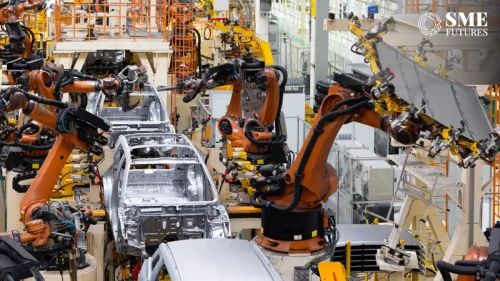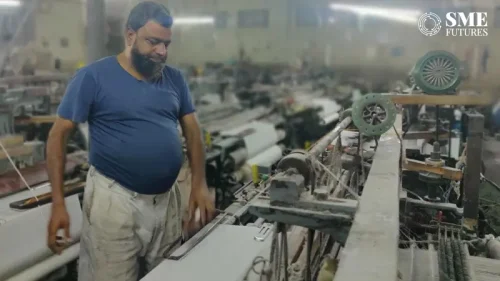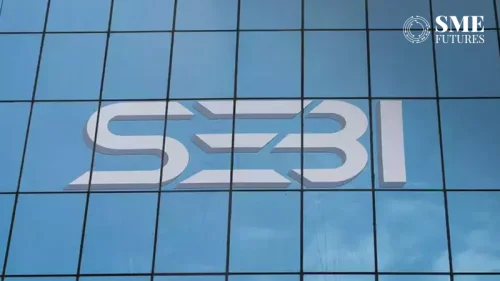India’s micro, small, and medium enterprises (MSMEs) sector stands at the precipice of transformative growth as 2025 begins. With the number of MSMEs projected to grow from 6.3 crores to approximately 7.5 crores, industry reports project that the sector is set to expand at a CAGR of 2.5 per cent. This article dives into the key trends shaping the MSME landscape, drawing insights from expert opinions, policy shifts, and macroeconomic forecasts.
But let’s first briefly understand the current MSME landscape.
As of March 2024, over 4 crore MSMEs have registered on the Udyam portal, including through the Udyam Assist Platform (UAP). The Indian Government allocated ₹22,138 crores (US$ 2.65 billion) to the MSME Ministry in the 2024 Union Budget, with ₹21,868 crores earmarked for central sector schemes—a marginal increase compared to the previous year. Despite these measures, challenges like inflationary pressures, rising costs, and global economic uncertainty continue to impact the sector.
Meanwhile, India’s economy, bolstered by steady GDP growth, provides a robust foundation for MSMEs. However, as the Reserve Bank of India (RBI) revises its Consumer Price Inflation (CPI) outlook for 2024-25 from 4.5 per cent to 4.8 per cent, driven by persistent food price pressures, MSMEs are feeling the squeeze. Rising input costs and supply chain disruptions necessitate innovative solutions for businesses to remain competitive.
But what lies ahead for this sector? Let’s dive into the key trends, challenges, and opportunities for MSMEs in 2025, drawing insights from industry experts.
The digital push: Revolutionising MSMEs
2024 marked a defining year for MSMEs, with digital transformation taking centre stage. Tools like the ONDC platform democratised e-commerce, allowing small businesses to compete with large players. Since its inception in 2021, it has facilitated over 150 million transactions, and the network now boasts of more than 200 participants, including over 7 lakh sellers, buyers, and service providers, creating a vibrant and competitive marketplace. Also, initiatives like the Unified Lending Interface (ULI) and the TReDS platforms have improved access to credit.
The adoption of advanced technologies such as AI, IoT, and blockchain is expected to increase among MSMEs by 2025. These tools are crucial for improving productivity and gaining competitive advantages.
Anand Kumar Bajaj, Founder and CEO of PayNearby, contends, “Digital adoption has empowered MSMEs to streamline operations, reduce costs, and explore new growth opportunities. As we move into 2025, our focus will remain on driving digital transformation and ensuring that MSMEs have access to financial tools for continued growth.”
Moreover, platforms like TReDS have been transformative. According to Sundeep Mohindru, Founder of M1xchange, TReDS has been a game changer. “TReDS has bridged the financing gap by facilitating the early financing of trade receivables, improving liquidity, and reducing payment delays. With nearly 60 per cent of MSMEs planning to digitise by 2025, the sector is embracing both digital transformation and sustainability,” he says.
Financial inclusion: More reforms needed
MSMEs have long faced challenges in accessing formal credit. However, initiatives like the Credit Guarantee Scheme and Udyam Assist Platform (UAP) have helped bridge this gap. As of March 2024, over 4 crore MSMEs were registered on the Udyam portal. Meanwhile, the launch of the Unified Lending Interface (ULI) has streamlined the lending process by allowing MSMEs to access tailored credit based on digital data.
“It is set to be a transformative force in India’s financial landscape in 2025, fostering greater transparency, accessibility, and efficiency in credit delivery,” says Gurjodhpal Singh, CEO of Tide India.
“ULI is set to be a transformative force in 2025, streamlining lending processes and driving financial inclusion. By enhancing credit access and fostering transparency, we aim to support small businesses across India,” he adds.
However, in 2025, MSME owners are expecting several policy changes to sustain their growth momentum such as enhanced financial reforms aimed at improving credit access and a simplified taxation regime that strengthens MSMEs.
According to Singh, small businesses also anticipate significant challenges such as ongoing issues with delayed payments from larger corporations, which can disrupt cash flow. “To prepare for these challenges, MSMEs are focusing on improving their financial management practices and leveraging technology to streamline operations,” he highlights.
“As we approach 2025, we look forward to enhancing our financial tools with AI-driven insights to create an inclusive financial landscape that supports SMEs nationwide. The upcoming year promises significant innovation as we work towards fostering growth and stability for small businesses across India. Overall, MSMEs in 2025 are poised to be recovering, resilient, and ready for growth amidst evolving market dynamics,” he adds.
Overcoming persistent challenges
Despite these advancements, MSMEs continue to grapple with delayed payments, inflationary pressures, and regulatory complexities. The Reserve Bank of India’s CPI forecast for 2024-25 has been revised to 4.8 per cent, with inflation peaking at 5.7 per cent in Q3, adding to operational challenges. Also, delayed payments from larger corporations disrupt cash flows. MSMEs are focusing on improving financial management and leveraging technology to mitigate these issues.
Supply chain innovation: Building global competitiveness
With India’s ambitions to become a global manufacturing hub, supply chain innovation will be crucial in 2025. According to experts in the field, with rising consumer demand for personalised products, faster deliveries, and seamless experiences, supply networks will become more customer-centric by 2025. This implies ample opportunities for small businesses.
On the tech front, supply chains in 2025 will be shaped by innovations, a focus on sustainability, and the need for agility. Businesses that leverage AI-powered solutions, harness data analytics, adopt eco-friendly practices, and prioritise localised production will be well-equipped to tackle the challenges of a fast-changing market landscape.
Ankit Jain, Co-Founder of Aksum Trademart, stressing the importance of technology-enabled supply chains, says, “India’s participation in global value chains demands a focus on manufacturing excellence, supply chain innovation and digital infrastructure. The future of supply chain is digital, and India is poised to lead the way.”
Policy expectations: Simplification and support
Policy reforms remain a top priority for MSMEs. While Budget 2024 allocated ₹22,138 crores to the MSME Ministry, stakeholders hope for further changes in 2025, including simplified tax regimes and enhanced compliance measures. For instance, ASSOCHAM, in its pre-budget recommendations, has sought policy reforms in taxation for MSMEs and new age businesses like data centres, cloud computing, etc.
Conversely, FICCI seeks reforms pertaining to both ease of doing business and cost of doing business. “Many of the next generation reforms lie in the state and concurrent domains and require consensus building to take them forward. Inter-state institutional platforms on the lines of the GST Council can be created – especially for reforms in areas of land, labour and power,” says FICCI in a statement.
Nilay Patel, MD of Easy Pay, asserts, “MSMEs anticipate reforms focused on compliance simplification, credit access, and technology adoption. Key trends expected to shape the sector include accelerated digital transformation, increased focus on sustainability, and emphasis on workforce development.”
Sustainability a priority
Sustainability is no longer optional. With India committed to achieving net-zero emissions by 2070, MSMEs are increasingly adopting eco-friendly practices. India inc feels that sustainability will play a pivotal role in the sector’s growth in 2025. FICCI recommends a policy framework that can target resources towards both green areas and transition areas.
“This includes developing Carbon Capture and Storage technologies, creating sector-specific roadmaps for India’s net-zero goal, launching a national circular economy vision, revising Priority Sector Lending for climate-focused activities, and establishing a Centre of Excellence for climate-smart agriculture,” read the FICCI recommendations.
Hopes for 2025
The MSME sector’s transformation is critical for India’s ambition to become a $5 trillion economy. By addressing financing bottlenecks, embracing technology, and focusing on sustainability, Indian MSMEs can unlock new growth horizons.
Consequently, in 2025, India’s MSME sector will not just recover but thrive—proving that resilience and reinvention can truly drive the backbone of the Indian economy forward.











